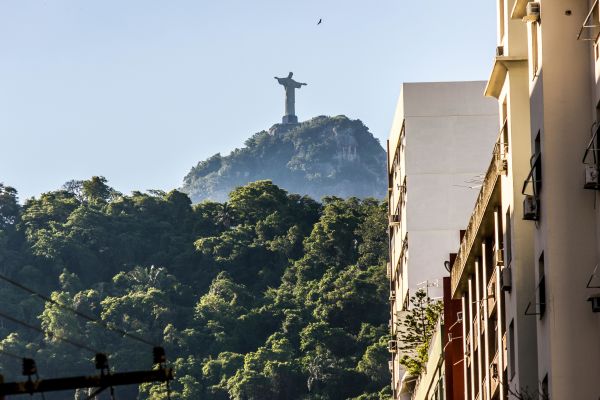San Pedro de Atacama: The window to the cosmos through the ALMA Observatory

In the heart of the driest desert on Earth , where the sky seems closest to the ground, lies one of the world's most enigmatic and captivating places: San Pedro de Atacama . This small, mystical town in northern Chile , surrounded by mountain ranges and salt flats, has won the hearts of explorers, scientists, and travelers seeking a unique connection with the universe.
It is no coincidence that it was chosen as the home of the ALMA Observatory , one of the most powerful and ambitious astronomical complexes ever built. From here, humans gaze at the sky to understand its most ancient secrets, while on Earth, almost extraterrestrial landscapes make one feel as if they are on another planet.
ALMA: The scientific jewel of San Pedro de Atacama
The Atacama Large Millimeter/submillimeter Array , known worldwide as ALMA , is a set of 66 high-precision radio telescopes installed at an altitude of over 5,000 meters , on the Chajnantor plain, in the Andes Mountains .
This is an unprecedented international project , driven by a collaboration between Europe, North America, East Asia and Chile , with the aim of exploring the depths of the cosmos by observing the cold universe : clouds of gas and dust, places where stars, planets and galaxies are born.

What makes ALMA so special is not only its advanced technology, but also its location . The Chajnantor Plateau is one of the driest and clearest places on Earth , with more than 300 clear nights a year , low humidity , a stable atmosphere , and high altitude . These conditions allow the radio telescopes to accurately capture signals from the universe that would be impossible to detect elsewhere in the world.
ALMA's mission , as its motto indicates, is to search for our cosmic origins , observing the universe at millimeter and submillimeter wavelengths , revealing phenomena invisible to optical telescopes.
With its gigantic antennas, ALMA has made it possible to observe protoplanetary disks , study early galaxies and capture details about dark matter and the evolution of the cosmos , writing new pages in the history of the universe .
View this post on Instagram
San Pedro de Atacama, a paradise for astrotourism
San Pedro de Atacama , thanks to its unique natural conditions, has also become one of the world's top astrotourism destinations . The skies in this corner of the world are free from light pollution and humidity , and its altitude makes the air purer, allowing for a clear and profound view of the heavens.
At night, the desert's darkness transforms into a magical setting where the Milky Way , southern constellations , bright planets , and meteor showers are visible to the naked eye. Numerous astronomical tours around the town offer high-end telescopes , guided talks by astronomers , and open-air stargazing .

Astrophotographers from around the world travel to San Pedro to capture the celestial vault . In San Pedro, the stars seem within reach, and the universe reveals itself in all its splendor. The Atacama night sky has become an iconic image of Chile and an open invitation to those seeking to understand their place in the cosmos.
To see space… and feel off-planet
The surroundings of this corner of Chile are so surreal that many travelers agree it seems more like a science fiction setting than an earthly destination . There are places where one can feel as if they are on Mars , the Moon , or even on planets yet to be discovered .
One of the most iconic is the Valley of the Moon , a desert landscape with rock formations sculpted by wind and time, giant dunes , and ever-changing hues that range from salty white to the reddish hue of sunset. Walking here is like exploring the lunar surface .

Nearby lies Death Valley , an even more rugged-looking ravine where dunes rise like sand mountains and rock formations resemble otherworldly sculptures. Its name, far from being daunting, evokes a sense of absolute adventure .

Another mesmerizing place is Piedras Rojas , a collection of intensely red volcanic rocks surrounded by turquoise lagoons at an altitude of over 4,000 meters . The contrast of colors , the vastness of the landscape, and the feeling of solitude make this place perfect for imagining yourself walking on the surface of Mars .

Finally, the Rainbow Valley surprises with a palette of colors that seems taken from a galactic experiment: greens, ochres, reds and whites combine on the slopes of hills formed by ancient minerals , a natural treasure in San Pedro de Atacama .

A profound connection between heaven and earth
A connection with nature , with science , with the cosmos , and with our history as humanity. The Atacama Desert is the point where the ancestral past of the Atacameño people, who looked to the stars to guide their rituals, meets the technological present of the ALMA Observatory , which explores those same stars with cutting-edge instruments.
A place where gazing at the sky is not only an aesthetic experience, but also a spiritual and scientific one . To observe the Milky Way , explore otherworldly valleys , or simply feel the silence of the desert beneath a blanket of stars . San Pedro de Atacama is, without a doubt, the clearest window we have to the infinite . A journey into the depths of wonder .
You might also be interested in: Saint Vincent and the Grenadines: The Secret Treasure of the Caribbean




















